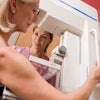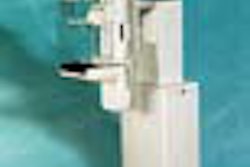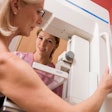The stratospheric cost of digital mammography has been seen as a high hurdle for vendors to clear. In recognition of this factor, at least one major company won't rush a system to market. Instead, Siemens Medical Systems says it will hold off on commercializing a full-field digital mammography system until it can substantially trim the costs, according to Joanne Scott-Santos, women's healthcare product manager.
"We don't feel there's a market for a system that calls for $400,000 to $500,000 to integrate into a radiology practice, given the reimbursement environment we have now," she said. "Right now, hospitals pay $60,000 to $80,000 for a (film-screen) unit, and they complain about losing money or breaking even."
Iselin, NJ-based Siemens has been developing a full-field digital mammography system since 1997, and plans to apply for regulatory clearance, both in the U.S. and internationally, sometime in 2001. Like GE Medical Systems with its Senographe 2000D product, Siemens has chosen amorphous silicon flat-panel digital detector technology for its system, which has not yet been named. The detector is built by Trixell, a French joint venture between Thomson Tubes Electroniques, Philips Medical Systems, and Siemens.
Siemens has begun testing the system at a few clinical sites, including the Medical College of Virginia in Richmond. The other testing locations are primarily in Europe, she said. Siemens declined to comment on how many patients have been imaged so far, but says it has spent approximately $50 million developing the system.
Siemens believes amorphous silicon flat-panel detectors offer significant benefits over other available technologies, such as charge-coupled devices (CCDs). One drawback of CCD-based systems is that they generate a very large amount of image data, which creates challenging archiving requirements, Scott-Santos said.
Exam times are also quicker with flat-panel systems, allowing for productivity gains. While the spatial resolution of CCD-based systems might be better at present, contrast resolution is superior on flat-panel systems, she said.
To bring system costs down, Siemens hopes to take advantage of advances in information technology, such as in monitors, networking, and image archiving. For example, Siemens is looking at ways to integrate the full-field system into a hospital PACS, rather than dedicating a local area network exclusively to the mammography unit. The company's medical systems group will work with other Siemens divisions and their partners in an effort to benefit from IT improvements, Scott-Santos said.
Siemens is also working to improve the detector's performance to ensure that the system will be definitively better than traditional film-screen units. Since the system is still a work-in-progress, Siemens declined to provide technical specifications, other than to say it is currently generating images with a resolution of 96 microns.
Siemens also plans to add computer-aided diagnosis (CAD) technology to its digital mammography portfolio. The firm is in discussions with several CAD firms, and will likely partner with one or two of them, Scott-Santos said.
Although the Food and Drug Administration has granted clearance to GE's Senographe 2000D full-field system using a premarket approval (PMA) application process, Siemens has not yet decided whether it will pursue the PMA or a traditional 510(k) application. The company will make its decision based on further guidance from the FDA, Scott-Santos said.
In any event, Siemens plans to apply for clearance for both diagnostic and screening applications. Unlike other firms, Siemens anticipates that it will initially apply for soft-copy clearance for its system.
"The only way this technology is going to be accepted (by the market) is where you can get the true value, and that's with soft-copy reading," she said.
As digital mammography moves toward commercialization, some market watchers and mammography researchers believe implementation will be slow, pending price reductions and further evolution of the technology. Indeed, digital mammography vendors must be able to prove their technology offers imaging and patient-management benefits not possible with film-screen systems in order for the market to take off, Scott-Santos said.
"We have to have an image that's going to be able to detect cancers earlier and differentiate between worrisome and benign lesions," she said. "There also has to be a breakthrough in information technology, allowing users to manage, archive, transmit, and print the images in a cost-effective manner."
By Erik L. RidleyAuntMinnie.com staff writer
March 24, 2000
(This is the third in a series of articles focusing on digital mammography technology.)
Let AuntMinnie.com know what you think about this story.
Copyright © 2000 AuntMinnie.com




















